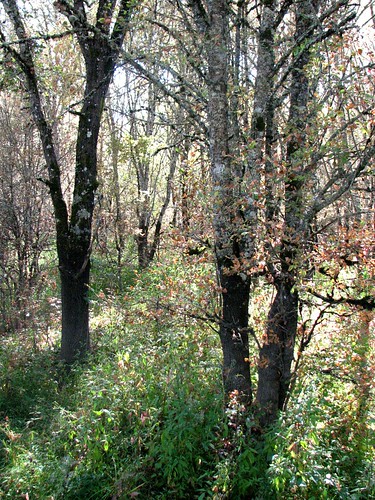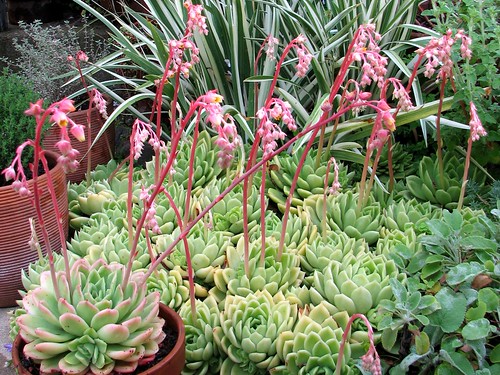Forever ago, when I was a teenager, my very first job was working in a local (Santa Clara) nursery. I loved being around all those plants and learning something new about them each day!
One day I was asked by a local gentleman, Mr. Crowley, if we have any ‘dusty millers’. So proud that I knew that we did and where they were, I escorted him directly to them. On our six-pak table, among bedding annuals and vegetable starts, were a few paks of plants with conspicuous felty white leaves, their labels announcing
DUSTY MILLER (and nothing more). As I turned happily to see my customer’s expression, I was surprised to see a look of consternation.
“Those are the wrong ones!” he scolded. Looking back at the plants, I suddenly realized that these were indeed different from those I’d seen previously labeled in the same manner. Nonplussed, I directed him to my boss who was just finishing up with another customer a few yards away. Later I saw the two of them standing over the same “wrong ones”, engaged in deep discussion. Apparently still unsatisfied, the customer left empty handed.
Years later, I learned that these new dusty millers were indeed a different plant – often still available today under this common name but known scientifically as
Jacobaea maritima (syn
Senecio cineraria). This is a good Mediterranean climate plant with divided leaves heavily covered with fine white hairs, justifying the common name. But not the one this fellow was looking for.
So, it turns out that I knew where Mr. Crowley lived (he was an acquaintance of my parents) and it was on my way home. Curious, after work was done, I rode my bike home making a slight detour to ride by his house. It was all clear when I stopped in front of his yard – a simple affair: a square of green lawn, bordered by junipers, but at regularly placed intervals were gray-white plants outlining the lawn edge. But some of these seemed to be missing – there were definite gaps in 3 places. As I was leaving, I noticed a full trash can on the street. The lid could hardly contain the contents – masses of ropy stems ending in a few gray-white felty leaves just like those in the garden.
I knocked on the door, but the house was dark and no one answered. As I left, I broke off a number of the stems that looked the least damaged. You see, I had recently learned that you could make new plants from old by striking cuttings, and I planned to experiment with these.
I had very good success in getting these cuttings to grow, and was able to study the plants a bit more closely now that they were in my possession. I came to learn that this ‘dusty miller’ was
Centuarea ragusina, the Dubrovnik cornflower, from the Adriatic. When the plants were well-rooted, I now had several. I kept a few for myself, and took the other ten, small potted plants to Mr. Crowley’s house on my way to work one day. Again, no one was home, so I tucked them to the side of the porch with a note. When I returned home, my surprised parents informed me that I was expected at the Crowley’s for dinner where I also helped Mr. Crowley plant his unexpected gifts.
Many years later I wanted to put
Centaurea ragusina in a garden but I could not find it through any of my usual sources. I had to substitute another gray leafed plant but I kept a look out for this species. Occasionally I felt I might have found it, only to be the victim of mistaken identity (the names of this and related plants are constantly confused with each other). One day, while visiting a nurseryman friend in France, I discovered
Centaurea ragusina among his stock! Soon, gifted this by my generous friend, I had this plant again growing in my garden (as pictured above).




